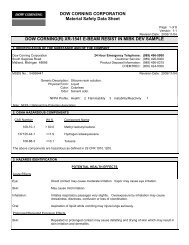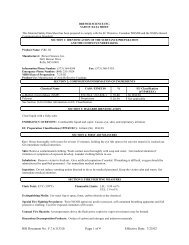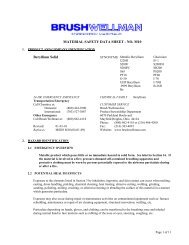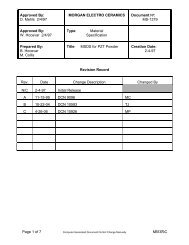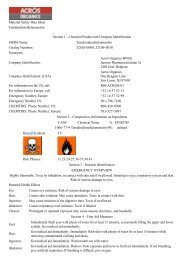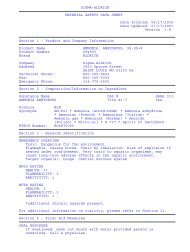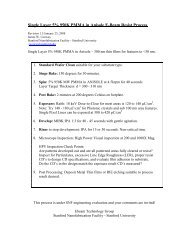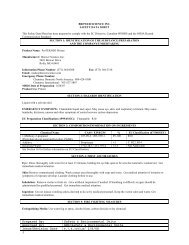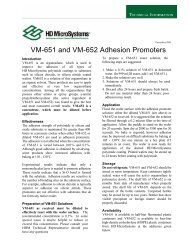EE 410 / Saraswat Handout #3 - Stanford Nanofabrication Facility
EE 410 / Saraswat Handout #3 - Stanford Nanofabrication Facility
EE 410 / Saraswat Handout #3 - Stanford Nanofabrication Facility
Create successful ePaper yourself
Turn your PDF publications into a flip-book with our unique Google optimized e-Paper software.
<strong>EE</strong><strong>410</strong> / <strong>Saraswat</strong> <strong>Handout</strong> <strong>#3</strong><br />
N-Source/Drain Implant:<br />
Species: Arsenic<br />
Energy: 180 keV<br />
Dose: 5 1015 cm-2<br />
Beam Current: < 40 µAmp<br />
Implant Angle: 7°<br />
Photoresist Removal and Clean:<br />
The implant hardens the resist so that piranha alone cannot clear the wafers. Tests have shown<br />
that even extended times in fresh piranha are not sufficient. Therefore the resist MUST be ashed.<br />
• Process using Standard Hard Resist Strip.<br />
P Blanket Implant:<br />
The active silicon and poly not implanted with arsenic must be doped with boron. Since the<br />
arsenic went down at 5 15, this dose of 1 x 1015 will not reverse the arsenic, but is enough to<br />
make good p-type contacts and okay poly.<br />
Species: BF2<br />
Energy: 80 KeV<br />
Dose: 1 1015 cm-2<br />
Beam Current: no limit<br />
Implant Angle: 7°<br />
4H. Week #4: Lab Section<br />
17. LTO Deposition (STEPS 4.280-4.300)<br />
LTO (Glass) Deposition:<br />
This step deposits and flows PSG, while annealing the n+ and p+ implants. While higher<br />
temperatures could better flow the PSG, they would over-drive the boron. IMPORTANT: Do<br />
these steps without interruption. A diff-clean between PSG deposition and flow causes reentrant<br />
step profiles and severely impairs the metal step coverage.<br />
• Process wafers through Standard Hard Resist Strip.<br />
• Use tylabbpsg<br />
• Program "LTOPSG40" in Tylan.<br />
• Process summary:<br />
o Slow push at 400°C.<br />
o Pump down to base pressure and perform a leak check by closing the gate valve<br />
and making sure that the system pressure doesn't rise above 100 mT.<br />
o Re-pump and flow 115 sccm of O2.<br />
o Start SiH4 flow of 100 sccm for enough time to deposit 50 nm of undoped SiO2.<br />
o • Begin the doped deposition by flowing 14 sccm of SiH4 and 86 sccm of<br />
PH3/SiH4. The PH3/SiH4 is a mixture of 15% PH3 in SiH4 which is designed to<br />
reduce the hazard of handling pure PH3. A leak of PH3/SiH4 will burn which is<br />
less hazardous from a toxic standpoint than a leak of unreacted PH3.<br />
o Purge and backfill with N2 to atmospheric pressure.<br />
Revised Jan. 11, 2008 Page 25/47




